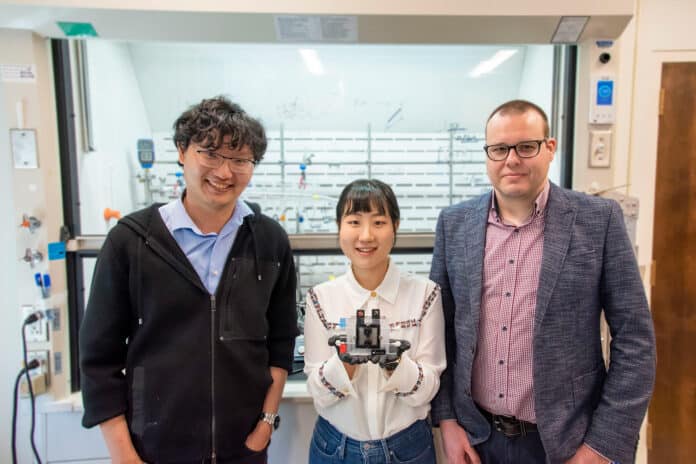About two-thirds of the Earth’s surface is water-covered, but clean and drinkable water is still inaccessible to billions of people. Robust, energy-efficient separation technologies for desalination and removing organic contaminants are critical in addressing growing concerns about water shortage and pollution.
Now, researchers at the Beckman Institute for Advanced Science and Technology have developed a new water purification system that uses an electrified version of dialysis to separate salt and other unnecessary particles from the potable product. According to researchers, the process saves money and reduces energy consumption by 90% compared to its counterparts.
Due to its energy consumption, desalinating sea water is generally more costly than fresh water. Once the shifty mineral dissolves, the separation process of salt from water becomes more expensive and uses more energy. Impurities and organic matter further complicate desalination, the removal of which spurs energy and cost budgets to swell.
“We need a way to purify drinking water that’s low-energy, inexpensive, and useful for the communities that need it the most. I see our solution as a platform to tackle both the energy and water crises,” said Xiao Su, a Beckman researcher and an assistant professor at the University of Illinois Urbana-Champaign.
De-salting water usually requires filtration or evaporation to separate out undesirable elements like sodium, chloride, organic matter, and assorted atomic stowaways.
Beckman researchers took a different approach: electrodialysis, which replaces water-splitting with an energy-efficient redox reaction.
Electrodialysis is an effective desalination tool but often has a high energy cost. The process uses charged ion-exchange membranes to remove ionic components under the driving force of an electric current from aqueous solutions. Ion exchange membranes are one of the most expensive components in electrodialysis, as they must be carefully maintained and replaced regularly.
To purify water without the energy toll of electrodialysis or the financial strain of ion-exchange membranes, Su and his colleagues modified the traditional approach in two major ways.
To save energy, the researchers advanced the salt separation process using redox-flow concepts by implementing a water-soluble redox copolymer. The special polymer-based material is added to the water prior to purification. This material changes the charge of the entire water molecule instead of splitting the molecule into a positively-charged proton and negatively-charged hydroxide. This change in charge via the redox reaction achieved the same degree of salty separation with about 90% less energy than traditional water-splitting.
The system also lowers costs because it does not require ion-exchange membranes. Instead, the researchers used cheaper and more robust nanofiltration membranes.
The effective membrane retention of the redox material and stable redox activity facilitates the continuous desalination of various source waters to produce potable water and remove organic contaminants without membrane fouling or polymer crossover.
Experiments at regional water treatment plants have shown that the researchers’ method can successfully purify wastewater. Future plans include expanding into saltwater and brackish water sources like groundwater and rivers.
Redox-inspired electrodialysis is designed to work well with solar panels due to its low energy requirement. Its positive performance in hot climates is useful for applications in climate-affected regions, “where low-cost, low-energy desalination is very much needed,” Su said.
Journal reference:
- Nayeong Kim, Johannes Elbert, Choonsoo Kim, and Xiao Su. Redox-Copolymers for Nanofiltration-Enabled Electrodialysis. ACS Energy Letters, 2023; DOI: 10.1021/acsenergylett.3c00482
